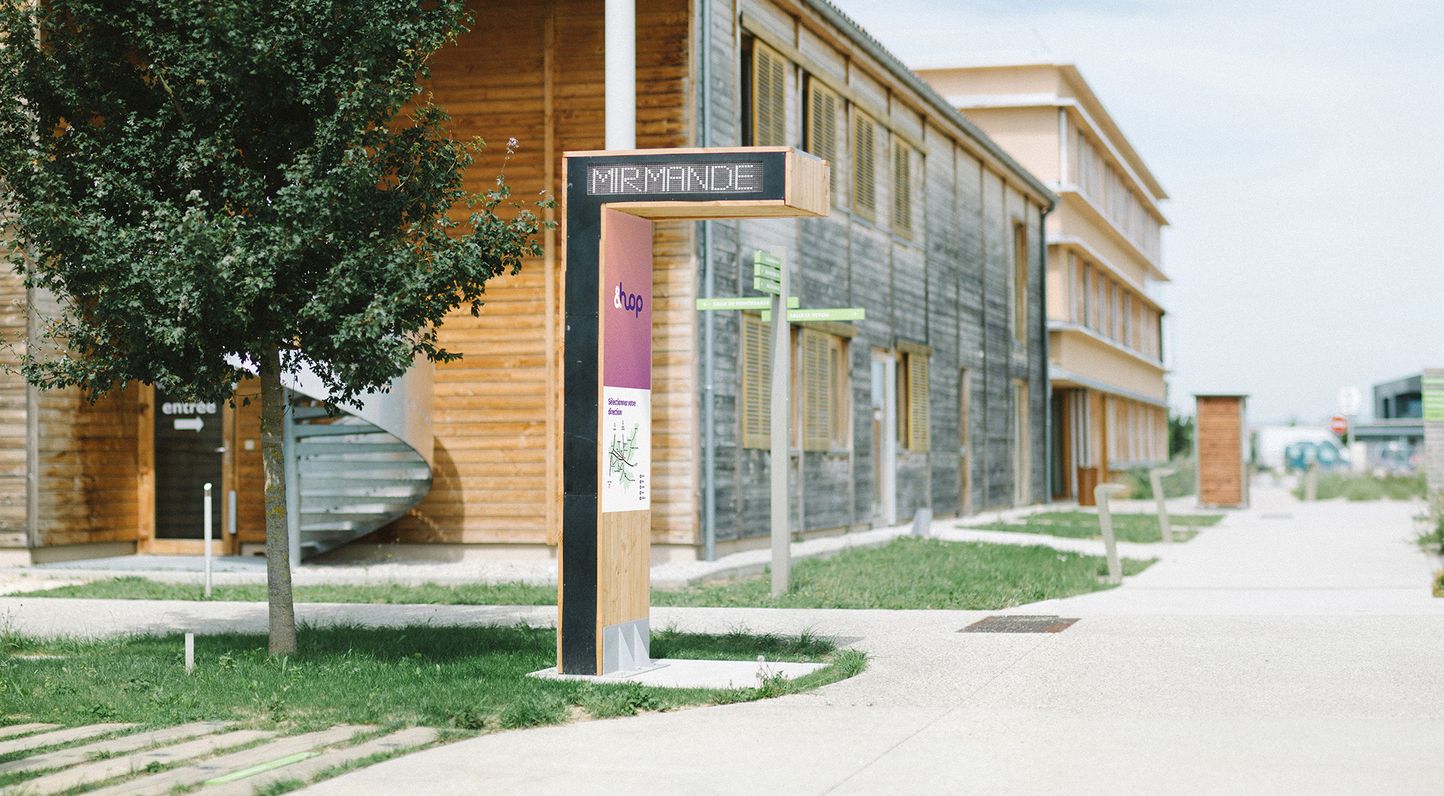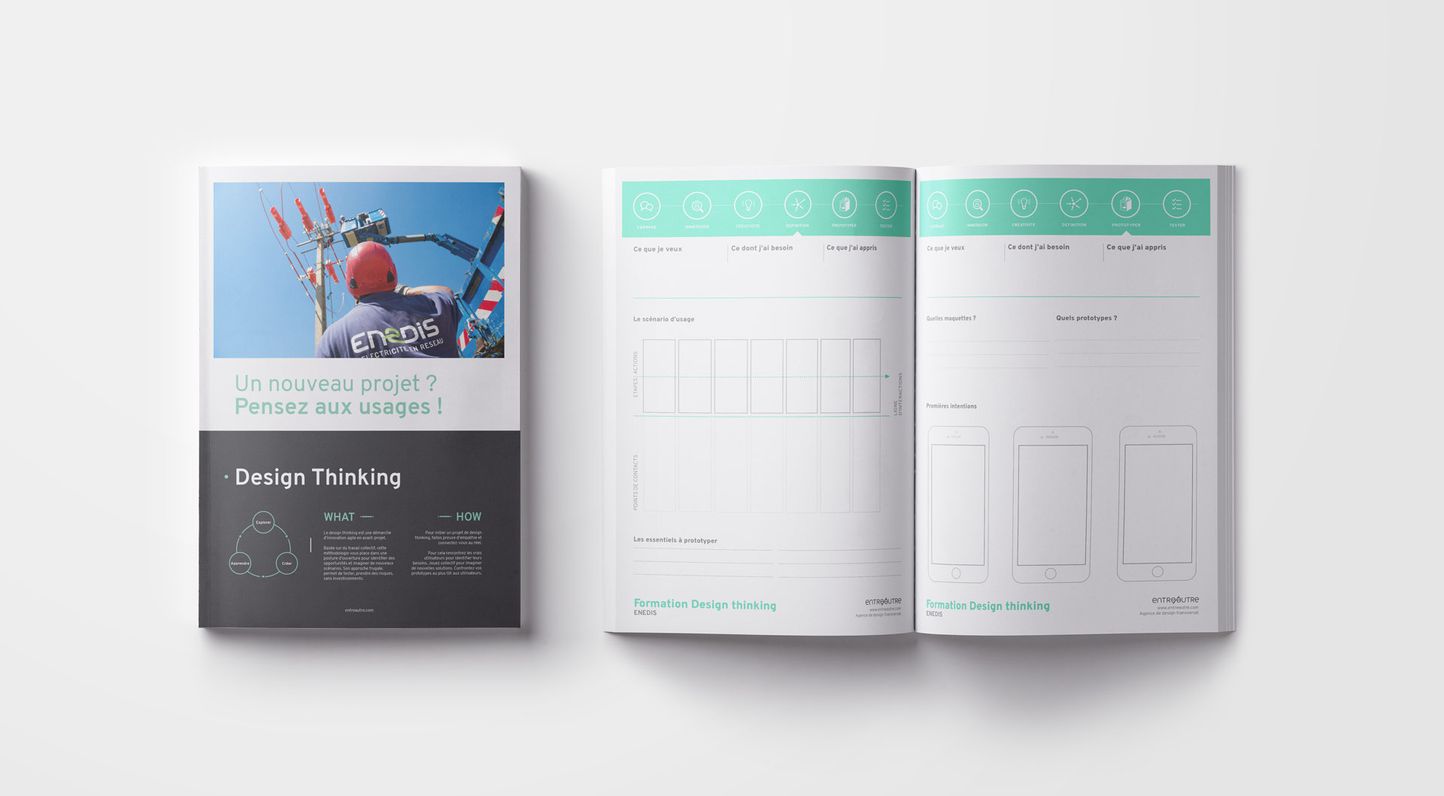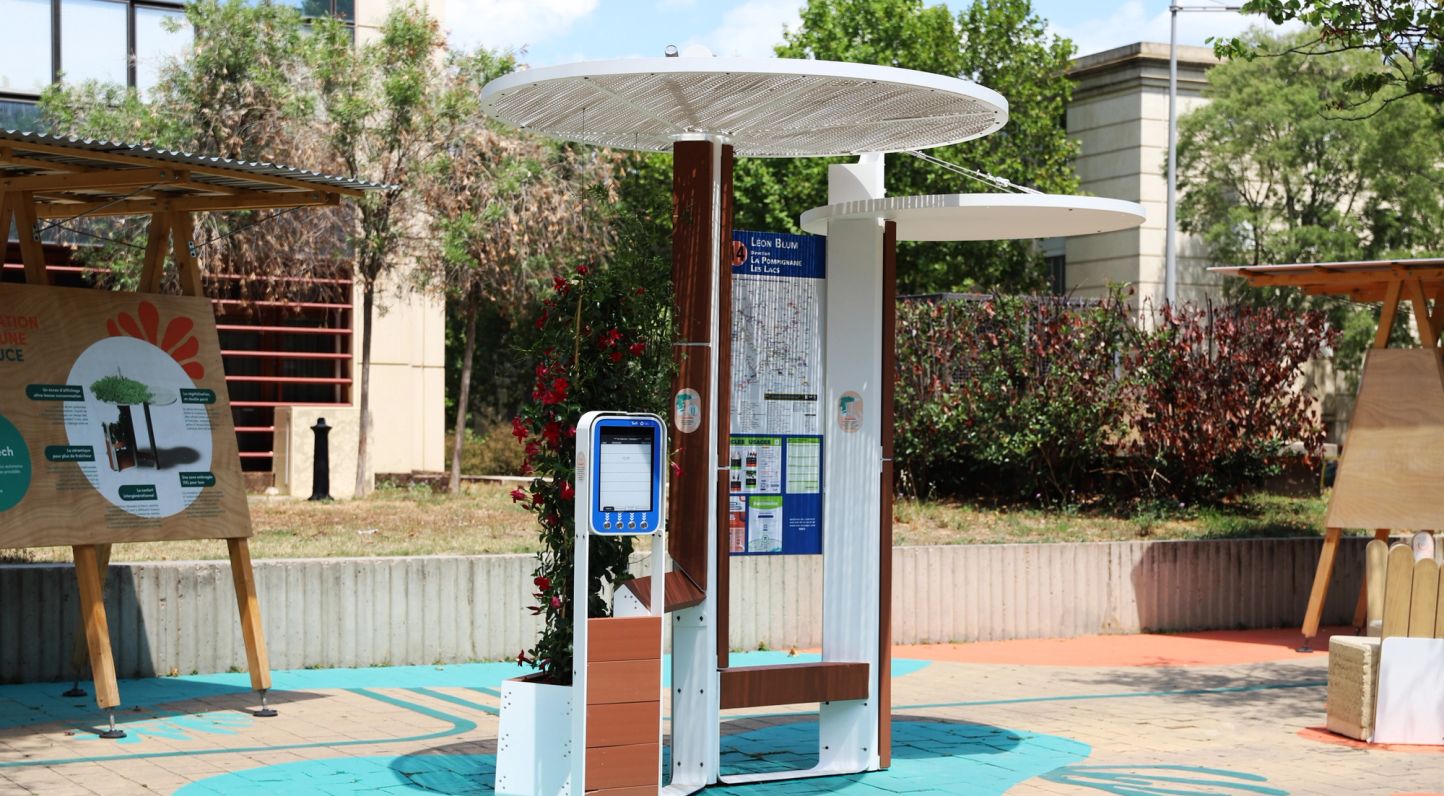
Guiding EDF towards collaborative innovation
01.Brief
EDF strengthens its innovation in Occitanie through the EDF Pulse competition: this initiative involves engaging teams to generate innovative concepts, leverage the technological expertise of startups, and collaboratively transform these ideas into proofs of concept. The studio introduced EDF to design thinking as a new innovation driver, emphasizing collective intelligence and participatory models.
"Collective intelligence to tackle complex challenges"
The studio assisted EDF in creating customized workshops to meet the specific themes and expectations of different departments. Indeed, between a service focused on risk analysis and another on waste management, the expectations are different. The studio also led collective intelligence sessions adapted to the specific contexts of each department, whether it was a project-driven approach (moving ideas forward) or a more immersive approach (enjoying time together while working).
02.Immersion
We started by studying the world of the two departments we were supporting: HYDRO CENTRE (the hydroelectric department of the center) and Cyclife. We gathered information about their professions, their organization, and their service offerings, to discover, for example, how the dam network is organized, the different types of structures and their specificities (location, landscape integration, coexistence of the various stakeholders in the valley…). By reading and engaging with their internal methodologies, we were able to grasp their unique approach (for instance, upstream criticality assessment of the dams).
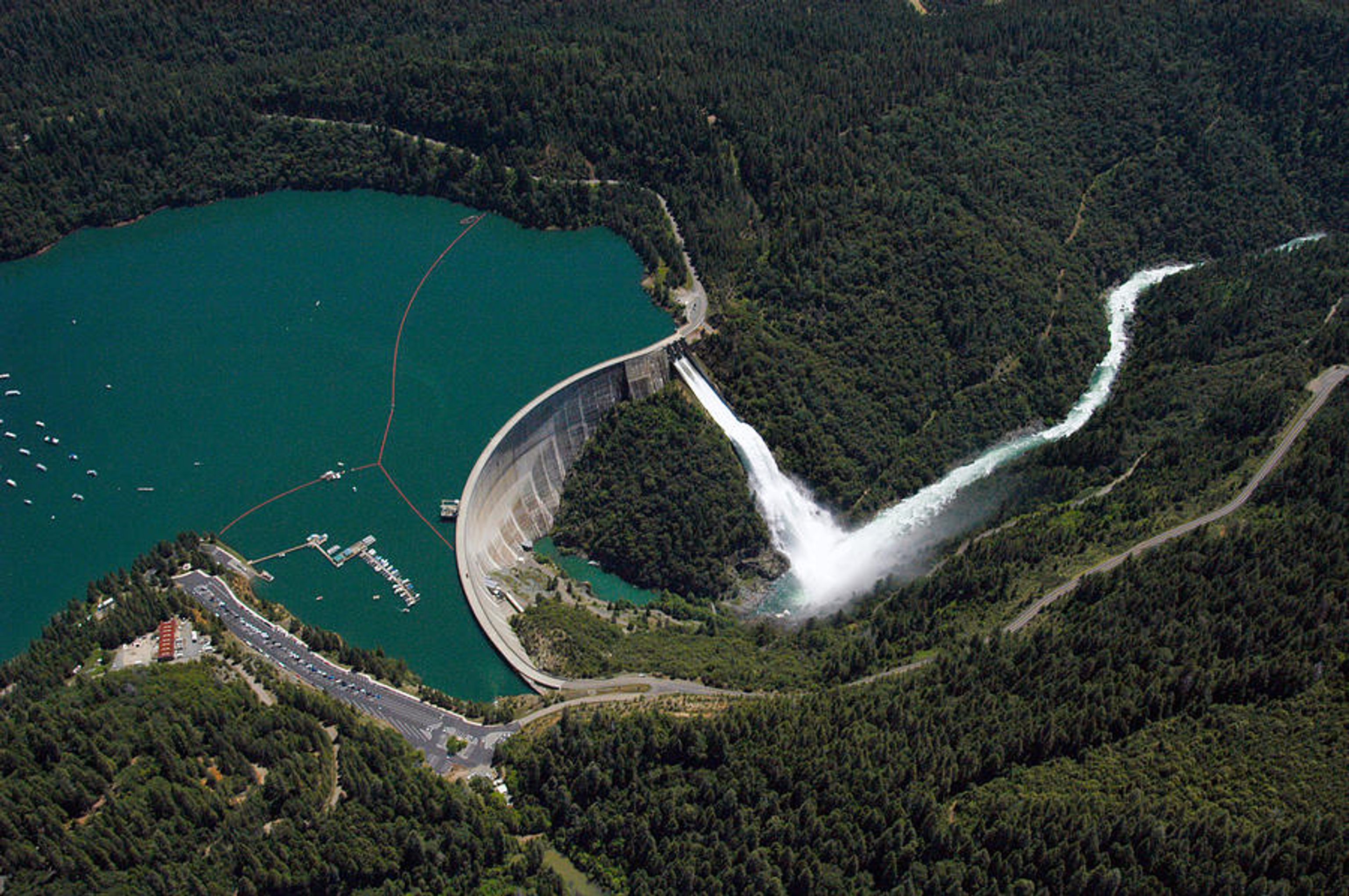
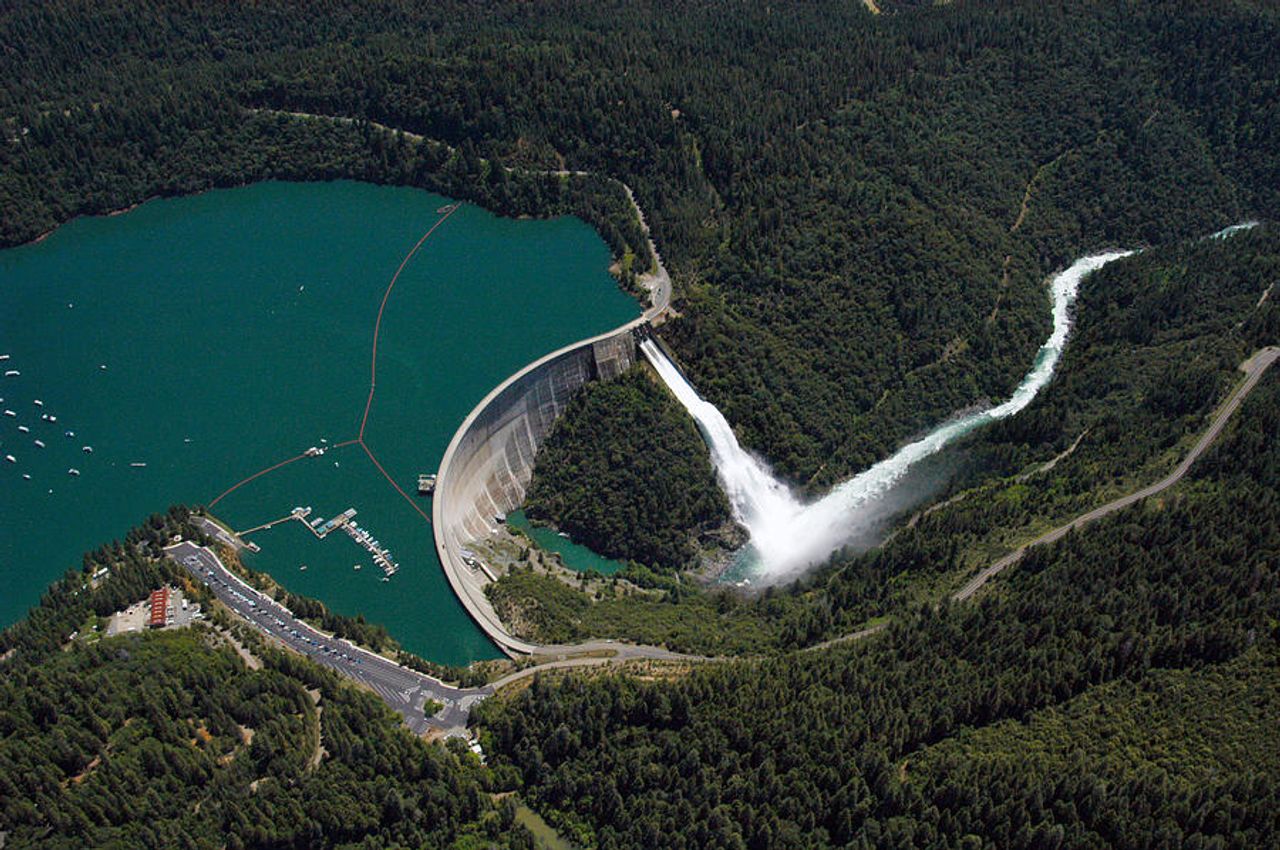
Each participant in the training had different expectations. We needed to understand the stakeholders, how they operate, and how they interact with each other in order to design our workshops that would meet both the goals of the PULSE competition and the specific challenges of each division.
Suggest an adapted methodology
We envisioned a workshop schedule tailored to the audience: having 2 designers for a workshop with 8 participants is not the same as one with 30. It’s important to set the right pace to create and maintain momentum, alternating between collective moments, small group work, or solo activities to engage participants in different ways.
We also had to consider the diverse experience levels of the participants, ranging from those familiar with chocolaterie (EDF’s internal fablab) to those less experienced in creativity.
We designed exercises tailored to the specific professions. For example, we created a giant map on which we could simulate events to understand the full scope of the upstream criticality of dams (from the dam to the valley floor, there are several kilometers and numerous activities and stakeholders involved).
For Cyclife, given the clearly identified challenges, we focused on workshops centered around usage scenarios.
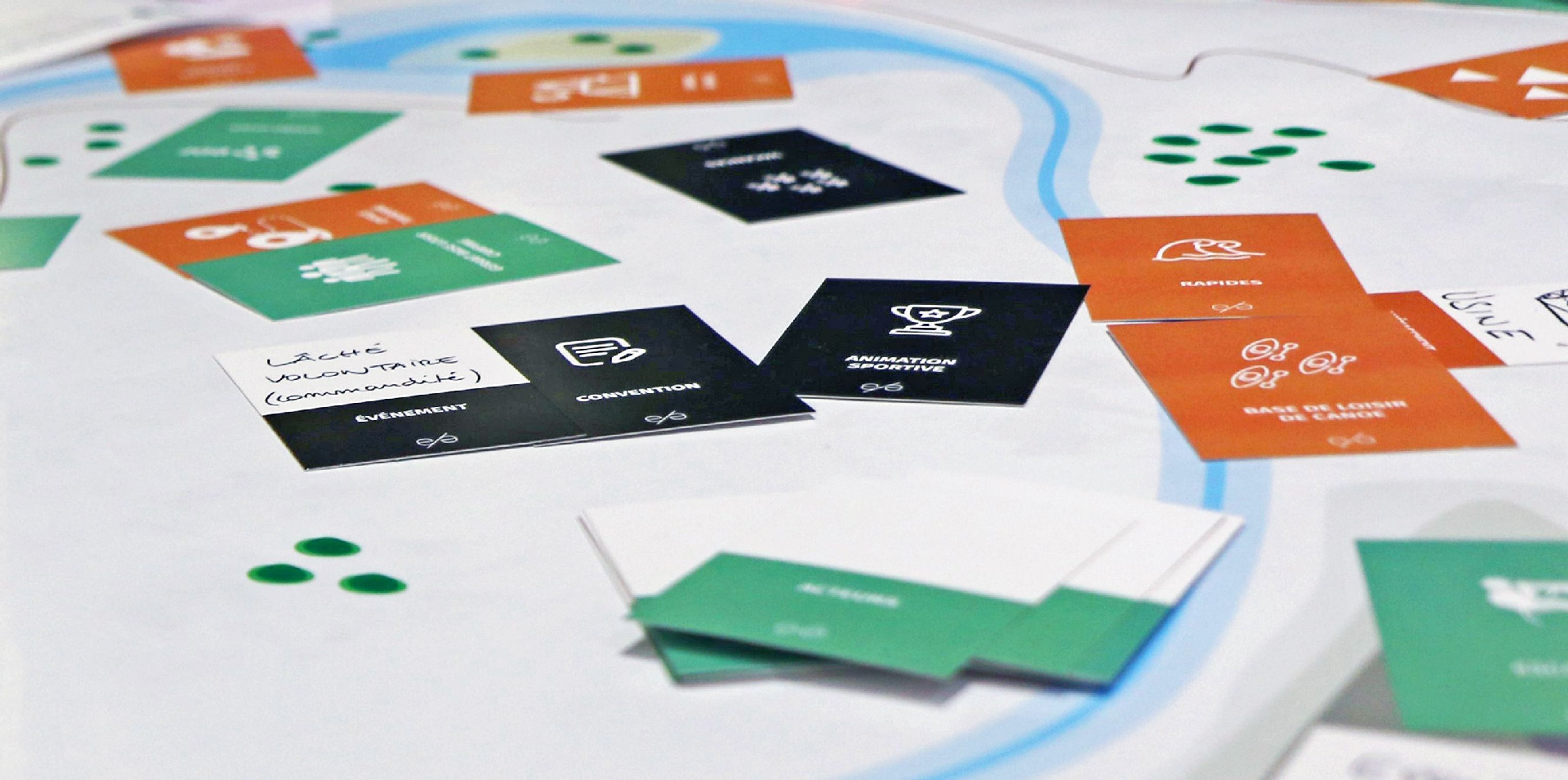
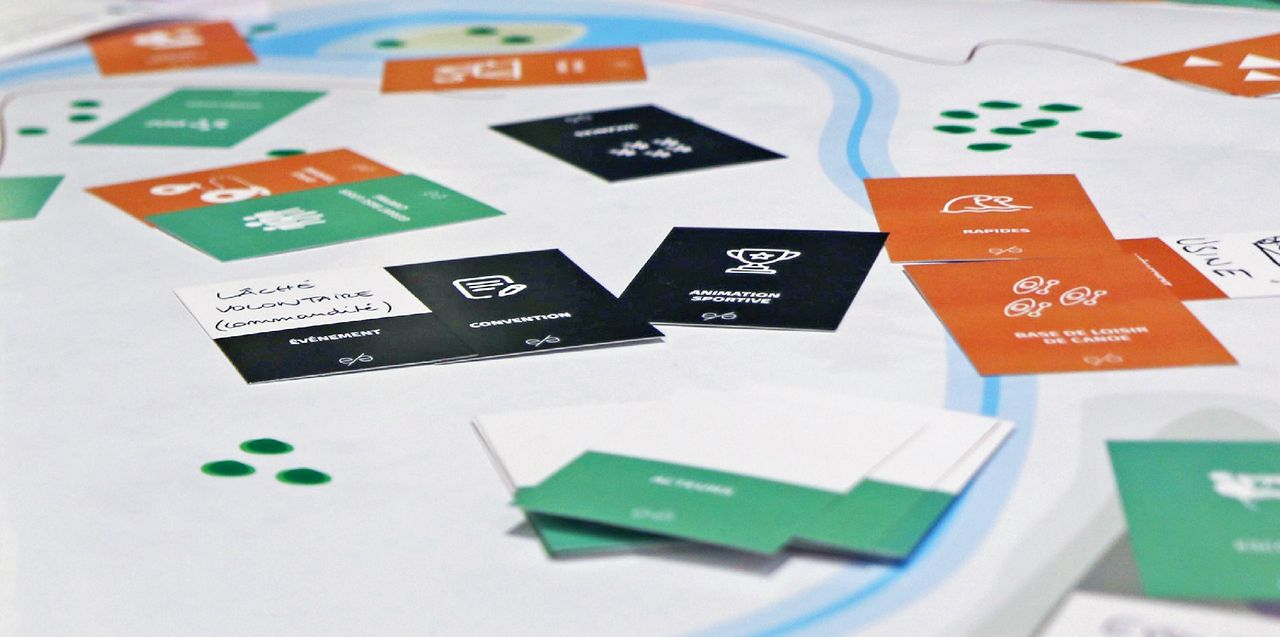
Test to ensure the creativity levers are effective
We first tested the program internally to refine the new exercises and ensure we fully mastered them. Taking the time to present our workshops to the PULSE team and the departments allowed us to ensure that the instructions were well understood. The level of understanding required variations from one department to another. A risk analysis engineer will naturally want to control all the parameters.
Next, we finalized the graphic materials and developed the card game for the HYDRO CENTRE workshop on criticality, paying close attention to the iconography and vocabulary.
A workshop is not limited to creativity exercises. It also involves managing logistical aspects and creating a supportive environment to help participants feel at ease. It’s a unique moment where participants will work in a different way for the duration of the day.
"Creativity is a collective game where you build on others' ideas."
03.Creativity & scenarios
Facilitating workshops
Facilitating means ensuring the smooth flow of the session, encouraging participation to leverage the knowledge of each participant, and driving discussions to overcome obstacles and move things forward.
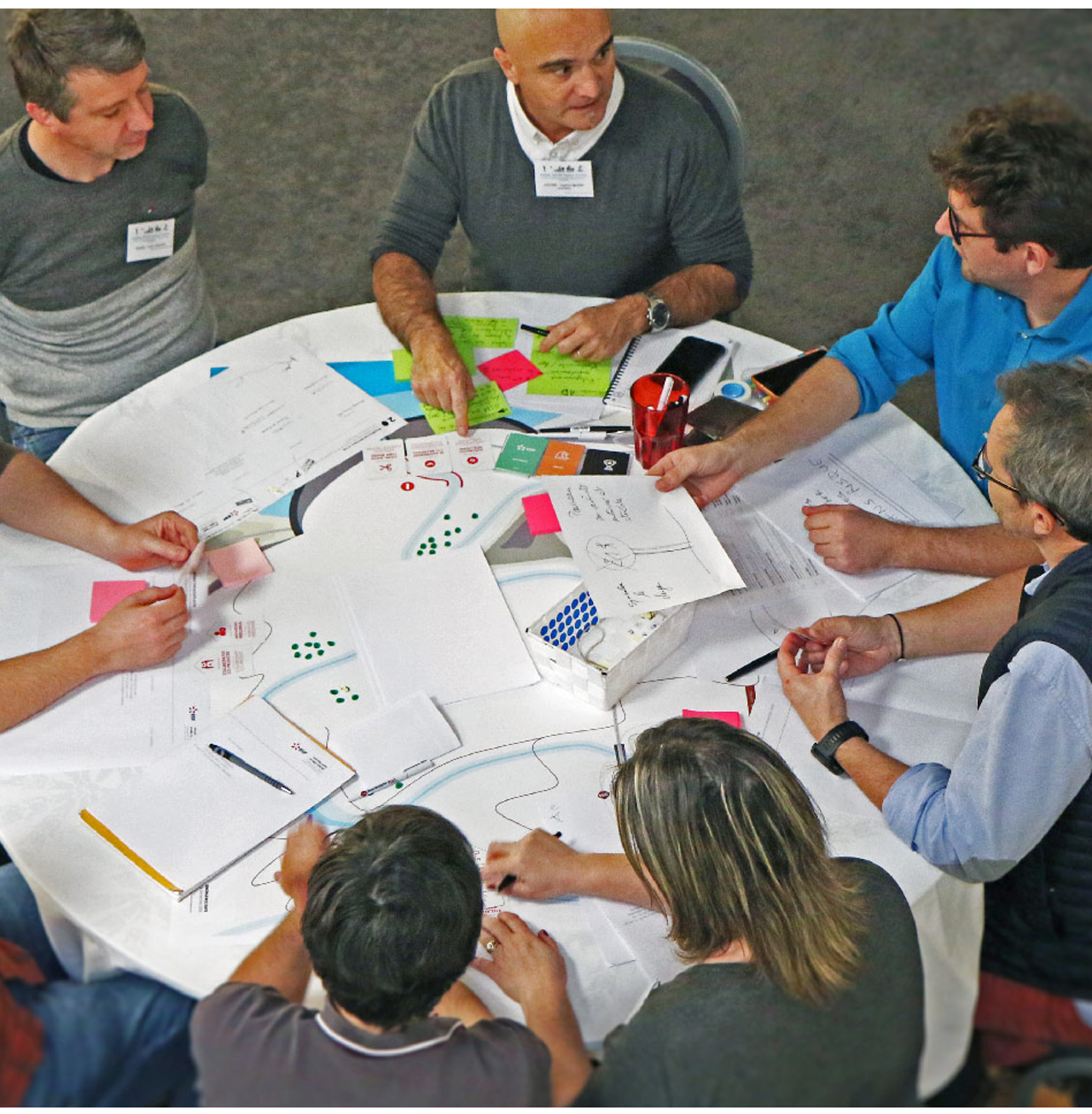
More than 200 ideas emerged from the HYDRO CENTRE workshop. What to do with so many ideas? How can they be transformed into actionable projects on the ground? We steered the workshops to focus on generating short- and medium-term projects. Simple, frugal ideas can drive change. Complexity does not always equate to better results.
It is the facilitator's role to encourage open communication by putting all participants on an equal footing, especially in a company where hierarchy is very present.
The PULSE team participated in the facilitation to transfer the methodology and train facilitators within EDF's divisions. It is important to choose a dedicated space, designed according to our needs: a large internal meeting room or a conference space in a hotel, where we create areas tailored for the different exercises.
Scenarios
After the workshops, it is essential to refine the ideas to develop scenarios, moving from an intention to a logical sequence. We outline the steps required to deliver the service, constructing the equivalent of a storyboard. We adopt the user’s perspective to identify the touchpoints between users and the service. This work helps bring out the key aspects of the project and the elements that truly matter.
The studio helped bring forth 3 projects:
- An application serving the territory, river users, and EDF, which promotes information sharing among these different stakeholders.
- An automated control chain.
- A portable tool for management and traceability in industrial zones.
We represent these scenarios using graphic design tools to facilitate their communication. This is essential for spreading the project within the teams, convincing management to fund them, and facilitating discussions with startups and partners.
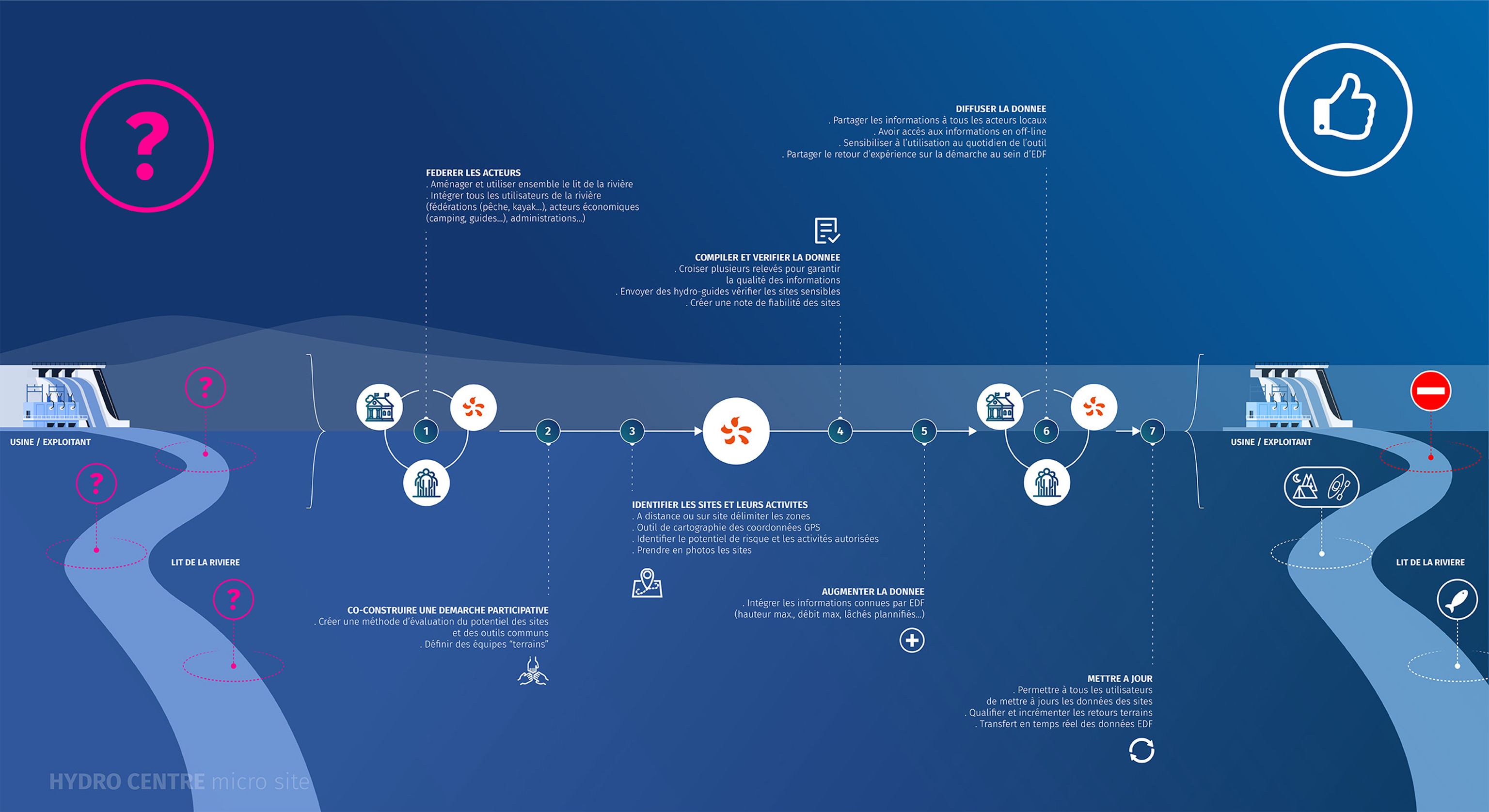
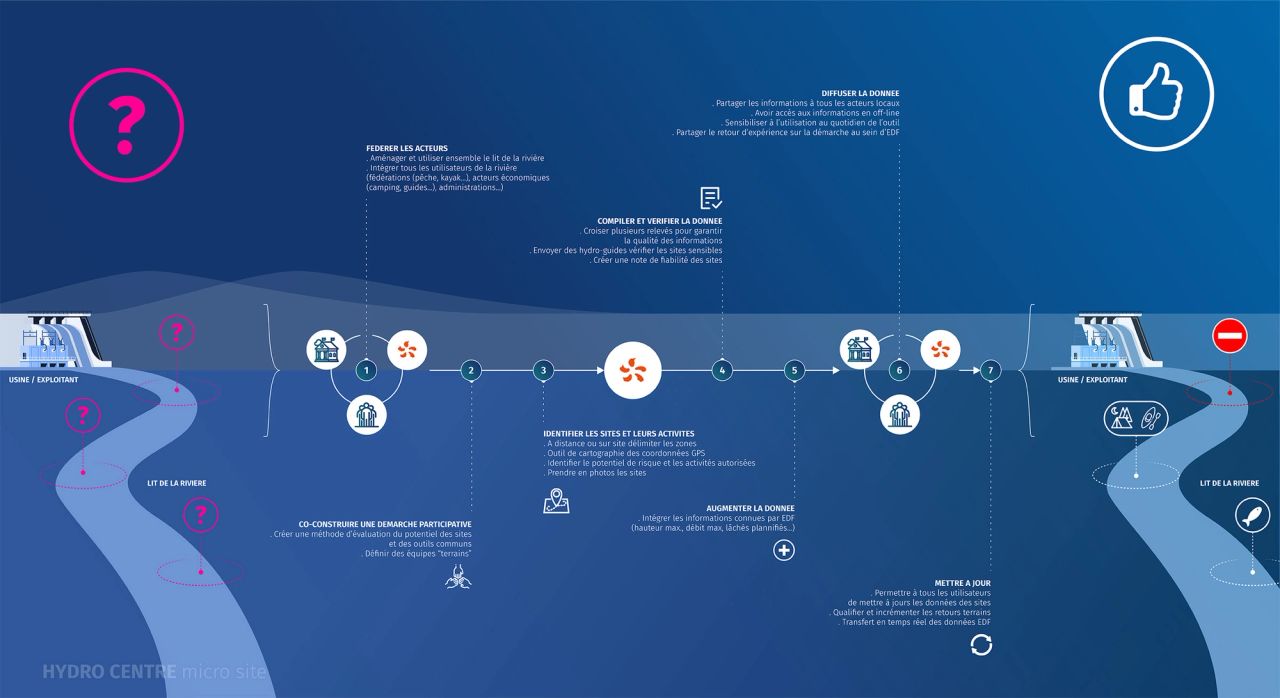
Results
Positive impact
Operational concepts aligned with user expectations.
Simplicity
Tailored solutions to address the key challenges faced by EDF employees.



